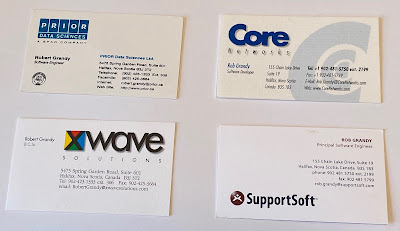If you made a list of the most prestigious software companies, the best, most desirable places to be. At this time in July 2021 the top of the software heap might look like
Google
Facebook
Microsoft
Apple
Amazon
Netflix
and right up there, not far behind I might include
Zoom
Uber
Twitter
now your list might be a bit different. maybe add or remove a couple here and there. but in general, these are considered the top, the biggest and most successful companies, the most sought after jobs. some use FAANG which is basically the same list.
what's interesting is that in the last few months two of these companies have reached out to me unsolicited from LinkedIn. I've been contacted by Amazon and Facebook. asking me if I might be interested in applying for something. I told them polite thanks, I'm not looking to make a change at this time.
I've been on LinkedIn for a long time but this had never happened before. So it's a bit unusual for me to be hearing from them. I haven't really made any meaningful changes to my LinkedIn profile that might be drawing extra interest from the search queries the elite companies presumably use to assemble lists of people to reach out to. But somehow I've now appeared on these queries twice in the last few months.
I'd think historically they have had plenty of high quality applicants to choose from. I'm basically a regular software developer in Nova Scotia with north of 25 years experience. It's a bit flattering to hear from them. Still I understand how rigorous their recruiting process is. I don't have any more illusions now than in the past about being able to successfully navigate that notorious process. It's a long way from sending an unsolicited email on LinkedIn to extending an actual job offer.
I got thinking about why they now seem to be reaching out further to find candidates. I suspect part of it is just how successful these companies have been, and how much they have grown. They may have outgrown the ability of traditional recruiting sources such as Stanford, CMU, MIT, Concordia, Harvard, other companies in Silicon Valley, to generate employees. So they have to be more creative to search further afield to find quality new employees to hire. Then there's Price's Law. It takes 1 million programmers to generate 1,000 exceptionals, the people Google wants. It takes 4 million developers to generate 2,000 exceptionals.
The 1 in 1,000 exceptionalism. These people are great of course and highly sought after, but are very rare. There could only be a few thousand in all of North America. Many are already onboard at Google and Facebook anyway. Of the rest, many have great situations in academia or the companies where they are at. They can't be lured to Silicon Valley or Seattle. I'm guessing the target for elite tech hiring is more around the Pareto principle. Under Pareto, 20% of developers generate 80% of the software progress. If we accept my speculation that the 20% Pareto group is a fractal, it's also Pareto distributed. Then 4% of developers create 64% of value in software. It's these 4%, the 1 in 25, who big tech is reaching out further to identify and recruit.
One factor which may be influencing big tech to reach further out is the increase in work from home. If there is some guy in Cape Breton who is outstanding, and would do fine in California. He is happy living in Cape Breton and not interested in moving. With work from home, big tech might be able to still recruit him, which would not have been possible in the past.
It's a big challenge for the elite firms. How to continue to grow and increase the head count, while maintaining the extremely high recruiting and hiring standards that have made them so successful. Reaching out further, to less familiar candidate pools, may increase this challenge further. Though there are outstanding people "out there" to be found. I've had the pleasure to work with a few over the years.

